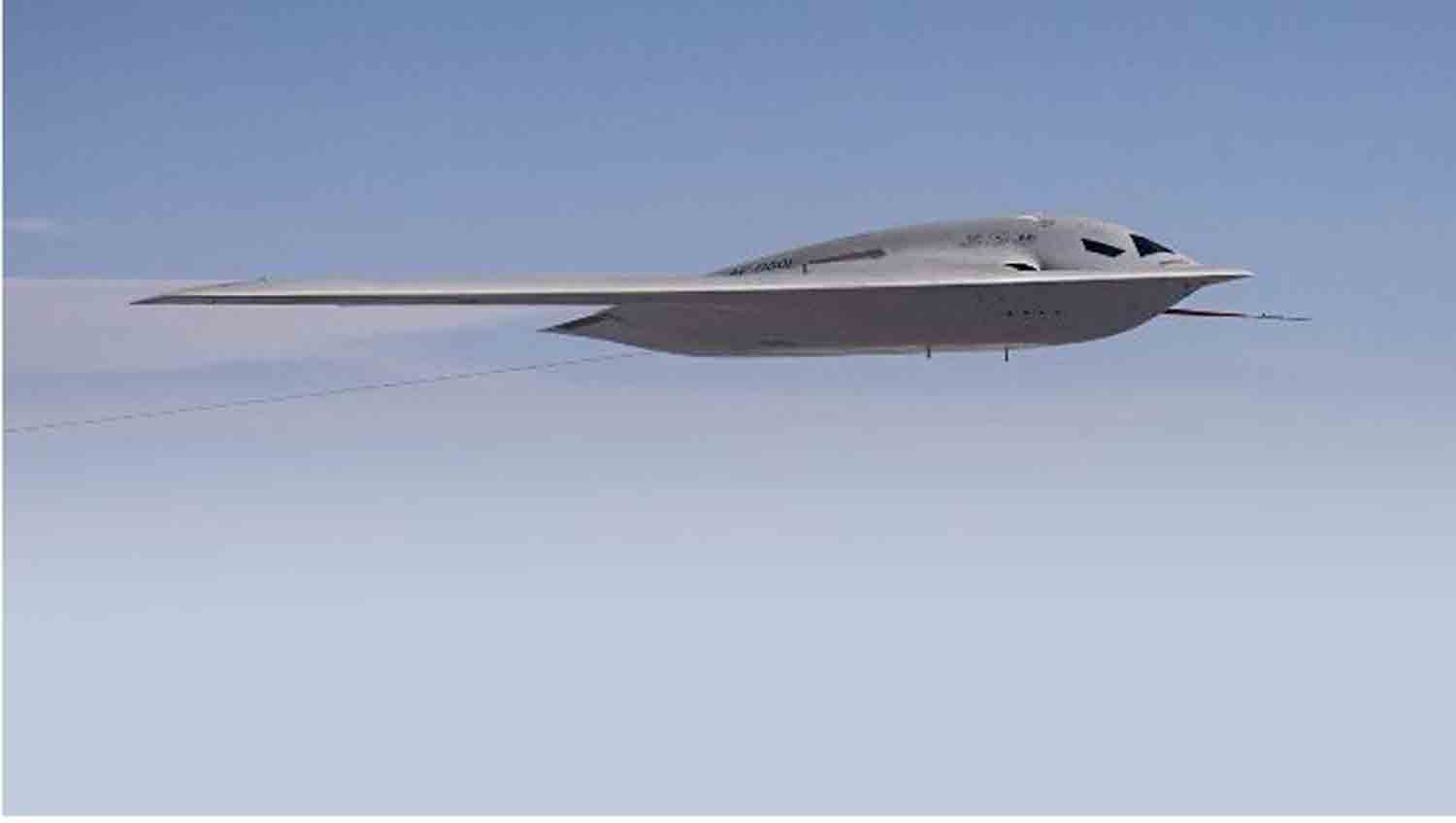On April 30, 2025, the U.S. Department of Defense made a notable advancement in its strategic alliance with India by approving a $131 million sale of SeaVision software along with associated support services aimed at bolstering India’s maritime domain awareness.
This transaction, conducted through the Foreign Military Sales program, encompasses software upgrades, training, remote analytical assistance, and access to documentation, thereby providing India with a robust tool to oversee and protect its extensive maritime boundaries.
Although the sale of software may appear less glamorous compared to high-profile transactions involving fighter jets or missile systems, the capabilities of SeaVision have the potential to alter the power dynamics in the Indo-Pacific, a region increasingly characterized by rivalry and tension. For American audiences, this situation prompts an important inquiry: could a software solution, rather than a new warship, be pivotal in addressing escalating threats in one of the globe’s most disputed maritime areas?
SeaVision transcends the notion of ordinary software; it is an advanced platform engineered to deliver real-time situational awareness across expansive oceanic territories. Created by the U.S. Navy and utilized by over 30 nations, including key allies, it amalgamates data from various sources—satellites, radar systems, Automatic Identification System [AIS] transponders, and even electro-optical sensors—to construct a thorough overview of maritime activities.
The system monitors vessels, discerns patterns, and identifies potential threats, ranging from smuggling and illegal fishing to military operations. For India, with its 7,500-kilometer coastline and strategic location along vital trade routes, SeaVision provides a means to oversee everything from commercial vessels in the Arabian Sea to naval ships near the Malacca Strait.
In contrast to conventional radar or patrol systems, SeaVision excels in its capacity to analyze extensive datasets and provide actionable insights, facilitating quicker and more informed decision-making. The agreement includes Technical Assistance Field Team (TAFT) training and remote support, ensuring that Indian operators are fully prepared to utilize the system’s capabilities, a process that may take several months but promises significant long-term operational benefits.
The timing of this transaction is strategic, as the Indo-Pacific region has emerged as a geopolitical hotspot, with China‘s increasing naval presence and assertive maneuvers in the South China Sea raising concerns among neighboring nations. India, a pivotal member of the Quadrilateral Security Dialogue (Quad) alongside the United States, Japan, and Australia, is positioning itself as a counterbalance to China’s ambitions.
The SeaVision agreement is particularly relevant amid escalating regional tensions, including China’s expanding maritime activities in the Indian Ocean, where it has established strategic footholds through port developments in Sri Lanka, Pakistan, and Djibouti as part of its Belt and Road Initiative.
Discussions on social media platforms have underscored worries about Chinese naval incursions in the area, reflecting public sentiment regarding the necessity for enhanced maritime security. Additionally, India’s relationship with Pakistan remains tense following a recent terrorist incident in Pahalgam, Kashmir. This unstable environment highlights India’s urgency to enhance its capacity to monitor its waters and address threats from both state and non-state actors, such as pirates and smugglers.
To appreciate SeaVision’s importance, it is essential to explore its technical features and how they align with India’s strategic objectives. The software is capable of tracking thousands of vessels at once, effectively differentiating between normal commercial traffic and suspicious activities.
For India, this capability is essential, particularly in regions like the Andaman and Nicobar Islands, a strategically important archipelago located near the entrance to the Malacca Strait, through which approximately one-third of global trade transits. The system’s analytical tools facilitate predictive modeling, allowing naval commanders to foresee threats, including Chinese submarines operating in the Indian Ocean or illegal shipments of arms and drugs.
In comparison to similar systems, such as China’s maritime surveillance platforms, SeaVision stands out due to its integration with U.S. and allied data networks, providing India with access to a more extensive intelligence framework. Although China’s systems are sophisticated, they are primarily proprietary and lack the interoperability that SeaVision provides through collaborations like the Quad’s Indo-Pacific Partnership for Maritime Domain Awareness (IPMDA).
Historically, maritime domain awareness has been fundamental to naval strength. During the Cold War, the U.S. Navy depended on advanced sonar networks and satellite reconnaissance to monitor Soviet submarines, ensuring dominance over crucial sea routes. Today, the situation is more intricate, with non-state actors, hybrid threats, and great power rivalry converging in areas like the Indo-Pacific.
India’s implementation of SeaVision builds upon this historical foundation, adapting it for a digital era where data is as vital as military might. The U.S. Navy’s utilization of SeaVision, especially in exercises such as RIMPAC, showcases its dependability in high-pressure scenarios. For India, this system will enhance existing capabilities, including its P-8I Poseidon maritime patrol aircraft and domestically produced corvettes, forming a multi-layered defense network.
The sale also encompasses software upgrades customized to India’s requirements, although specific details remain classified. These enhancements may include tailored algorithms for monitoring particular threats, such as China’s Type 039A submarines, or integration with India’s homegrown surveillance systems.
The introduction of SeaVision could significantly alter the operational capabilities of India’s navy. Imagine a situation in the Arabian Sea where a suspicious vessel is detected approaching India’s western coastline. With SeaVision, Indian operators would be able to ascertain the ship’s origin, monitor its trajectory, and compare its actions against established smuggling or espionage patterns.
If deemed a threat, the system could transmit its coordinates to a nearby frigate or drone for a swift response. In the event of a larger conflict, such as a naval standoff in the Malacca Strait, SeaVision could facilitate coordination among India’s fleet, offering real-time intelligence on enemy locations while sharing information with Quad allies. This level of interoperability is crucial, especially as the Quad emphasizes maritime security through initiatives like the Maritime Initiative for Training in the Indo-Pacific [MAITRI], which India is set to host in 2025.
The U.S. State Department has highlighted that this sale will enhance the strategic partnership between the U.S. and India, reinforcing a major defense ally that plays a vital role in maintaining stability in the Indo-Pacific and South Asia. Furthermore, the implications of the SeaVision sale extend beyond India. Pakistan, already cautious of India’s expanding military strength, may interpret this agreement as a shift in the regional power dynamics.
The tensions between the two countries, heightened by the Pahalgam attack, could worsen if Pakistan views India’s improved surveillance capabilities as a threat to its maritime operations, especially near Gwadar port, a crucial element of China’s Belt and Road Initiative.
In response, China is likely to intensify its maritime surveillance initiatives, potentially deploying more sophisticated systems to counter the influence of SeaVision. The recent collaboration with Pakistan at Beijing’s Tiangong Space Station highlights China’s ambition to lead in space-based surveillance, an essential aspect of contemporary maritime awareness.
The transaction underscores the United States’ strategic shift towards the Indo-Pacific region, where it has enhanced partnerships through initiatives such as Balikatan 2025 with the Philippines and the deployment of the HMS Prince of Wales Carrier Strike Group. The evolving role of the Quad, which includes planned joint Coast Guard operations for 2025, further contextualizes this agreement.
The transition towards software-centric solutions like SeaVision illustrates a significant trend in U.S. defense exports. Unlike previous decades dominated by hardware sales—such as tanks, aircraft, and missiles—the Pentagon is now focusing on systems that facilitate data-driven warfare. This strategy presents multiple benefits: software is generally more affordable than hardware, simpler to upgrade, and less likely to incite backlash compared to offensive weaponry.
Nevertheless, it carries inherent risks. SeaVision’s dependence on interconnected data renders it susceptible to cyber threats, a rising concern as state actors like China and non-state hackers target essential infrastructure. The U.S. has encountered similar issues with its systems, exemplified by the 2020 SolarWinds breach, which revealed weaknesses in government networks. India must invest in strong cybersecurity measures to safeguard SeaVision, a challenge that the TAFT training may help address but will not completely resolve.
From an economic perspective, SeaVision could provide India with advantages beyond security. The Indian Ocean serves as a crucial channel for global trade, facilitating 80% of the world’s maritime oil shipments and a third of its bulk cargo. By combating illegal fishing and piracy, SeaVision could protect India’s fishing sector, which supports millions of jobs, and secure trade routes vital to its $3.5 trillion economy.
Additionally, the system’s capability to monitor environmental hazards, such as oil spills or climate-related changes, aligns with India’s leadership role in the Indian Ocean Rim Association, which it will chair in 2025. For the U.S., this sale enhances economic relations with India, a market anticipated to emerge as the world’s third-largest economy by 2030.
The $131 million agreement, though relatively small compared to multi-billion-dollar arms transactions, reflects a growing confidence in India’s capacity to integrate advanced technologies, as highlighted by the Defense Security Cooperation Agency. Looking forward, the SeaVision sale prompts considerations about the evolution of warfare and international alliances. If a single software system can alter the maritime equilibrium, what implications does this hold for conventional naval dominance?
The U.S. and its allies are wagering that data-centric systems will characterize the forthcoming phase of conflict, while adversaries such as China are also advancing. China’s investments in artificial intelligence and satellite infrastructure indicate its readiness for a similar trajectory, where information becomes the paramount weapon.
This deal underscores that the Indo-Pacific is not a remote battleground but a pivotal area influencing global trade, energy, and security. India’s expanding influence, supported by innovations like SeaVision, positions it as a vital ally in this strategic competition. However, as the U.S. intensifies its engagement in the region, it must carefully manage the potential for escalation, especially concerning Pakistan and China, where misjudgments could lead to wider conflicts.
Is SeaVision a move towards stability, or does it bring the Indo-Pacific closer to a digital arms race? The future remains uncertain, but it is evident that the contest for maritime supremacy is increasingly being waged in data centers as much as on the high seas.
Discover more from Defence Talks | Defense News Hub, Military Updates, Security Insights
Subscribe to get the latest posts sent to your email.





